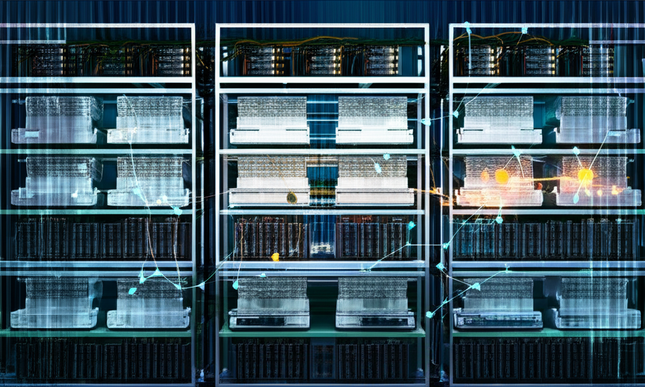Comprehensive Guide to Crypto Mining Hardware, Profitability, and Industry Trends
The world of cryptocurrency mining is constantly evolving, influenced by technological advancements, market dynamics, and regulatory environments. In this article, we’ll explore the main types of crypto mining hardware, factors affecting profitability, industry challenges, and key purchasing and infrastructure considerations to help miners — whether amateur or professional — navigate this complex landscape.
Types of Crypto Mining Hardware
Choosing the right mining hardware is essential for maximizing efficiency and profitability. Here are the main types of mining equipment available:
ASIC Miners
Application-Specific Integrated Circuit (ASIC) miners are custom-built devices designed to mine specific cryptocurrencies, primarily Bitcoin. These devices offer unparalleled mining efficiency and higher hash rates compared to other hardware options because they are optimized for a particular Proof-of-Work (PoW) algorithm.
ASIC miners are widely favored for large-scale Bitcoin mining operations due to their power efficiency and specialized design. For more details, check out Oneminers and ASICProfit, which offer insights and sales for ASIC hardware.
GPU Miners
Graphics Processing Units (GPUs) offer far greater versatility compared to ASICs. While ASICs are limited to specific coins, GPUs can mine a variety of PoW cryptocurrencies, such as Ethereum alternatives and others still reliant on GPU mining.
Although GPUs tend to be less efficient than ASICs for any one coin, their flexibility allows miners to switch coins based on profitability and network difficulty. Explore GPU mining solutions and containers at MinerBoxes.
Mining Boxes and Containers
For large-scale and industrial mining operations, managing multiple miners requires robust infrastructure. Mining boxes or containers help by housing several mining rigs together while providing optimized solutions for heat dissipation and noise reduction.
Such infrastructure supports operational efficiency and environmental management, crucial for bigger mining farms. Learn more about such solutions at MinerBoxes.
Profitability and Factors Affecting It
Mining profitability is highly dynamic and depends on several factors that miners should carefully consider before investing:
Key Profitability Factors
- Cryptocurrency Prices: The market price of coins like Bitcoin and Ethereum (just prior to its transition to Proof-of-Stake) directly impacts potential rewards.
- Mining Difficulty: As more miners join the network, difficulty adjusts, affecting how many coins you can realistically mine.
- Electricity Costs: Mining is energy-intensive; cheaper electricity can significantly enhance profitability.
- Hardware Efficiency: More efficient ASICs or GPUs consume less power per unit of mining output.
Profitability Calculators
Online calculators, such as those offered by ASICProfit, provide estimates based on current market metrics. However, since cryptocurrency markets are volatile, these estimates should be used as guidelines rather than guarantees.
Regular monitoring of market prices on platforms like CoinMarketCap can assist miners in making real-time decisions.
Industry Trends and Challenges
The crypto mining sector is facing significant challenges and shifts influenced by technology, economics, and regulation:
Environmental Concerns
Mining’s high energy consumption has drawn scrutiny over its environmental footprint. Discussions about sustainable mining practices, including the use of renewable energy sources, are ongoing in the community.
For comprehensive news and developments on this front, refer to CoinTelegraph.
Regulatory Impact
Regulations vary dramatically across countries, leading to dynamic mining landscapes. Some jurisdictions have banned or restricted mining due to power concerns or financial regulations, causing shifts in mining operations geographically.
Advancements in Mining Technology
Ongoing innovation brings new generations of ASICs that boost hash rates while reducing energy consumption, helping to maintain profitability amidst rising difficulty.
Retailers like Iceriver provide access to the latest mining hardware and support for mining infrastructure.
Purchasing and Infrastructure
Whether starting small or scaling up, miners require a reliable supply of quality hardware and supportive infrastructure:
Mining Equipment Retailers
Specialized vendors such as Oneminers and Iceriver offer an array of mining rigs, parts, and accessories designed to fit various budgets and needs.
Heat and Noise Management
Mining operations generate significant heat and noise. Solutions like immersion cooling and sound-dampening enclosures enhance operational conditions and miner longevity.
Companies such as MinerBoxes specialize in providing such infrastructure.
Key Takeaways
- ASIC miners provide unmatched efficiency for specific cryptocurrencies, while GPUs offer mining versatility.
- Mining profitability is volatile and depends on cryptocurrency prices, difficulty, and electricity expenses.
- The industry is shaped by environmental concerns and regulatory changes, requiring miners to stay informed and adaptable.
- Modern tools and infrastructure solutions support both hobbyist and professional mining setups.
Call to Action
Ready to dive into cryptocurrency mining or upgrade your operations? Explore reliable hardware options at Oneminers and Iceriver, and stay updated with the latest market trends on CoinMarketCap. Consider environmental impact and regulatory guidelines to mine responsibly and profitably.



